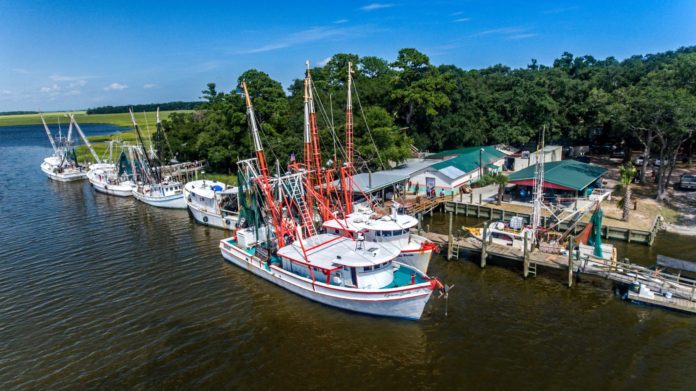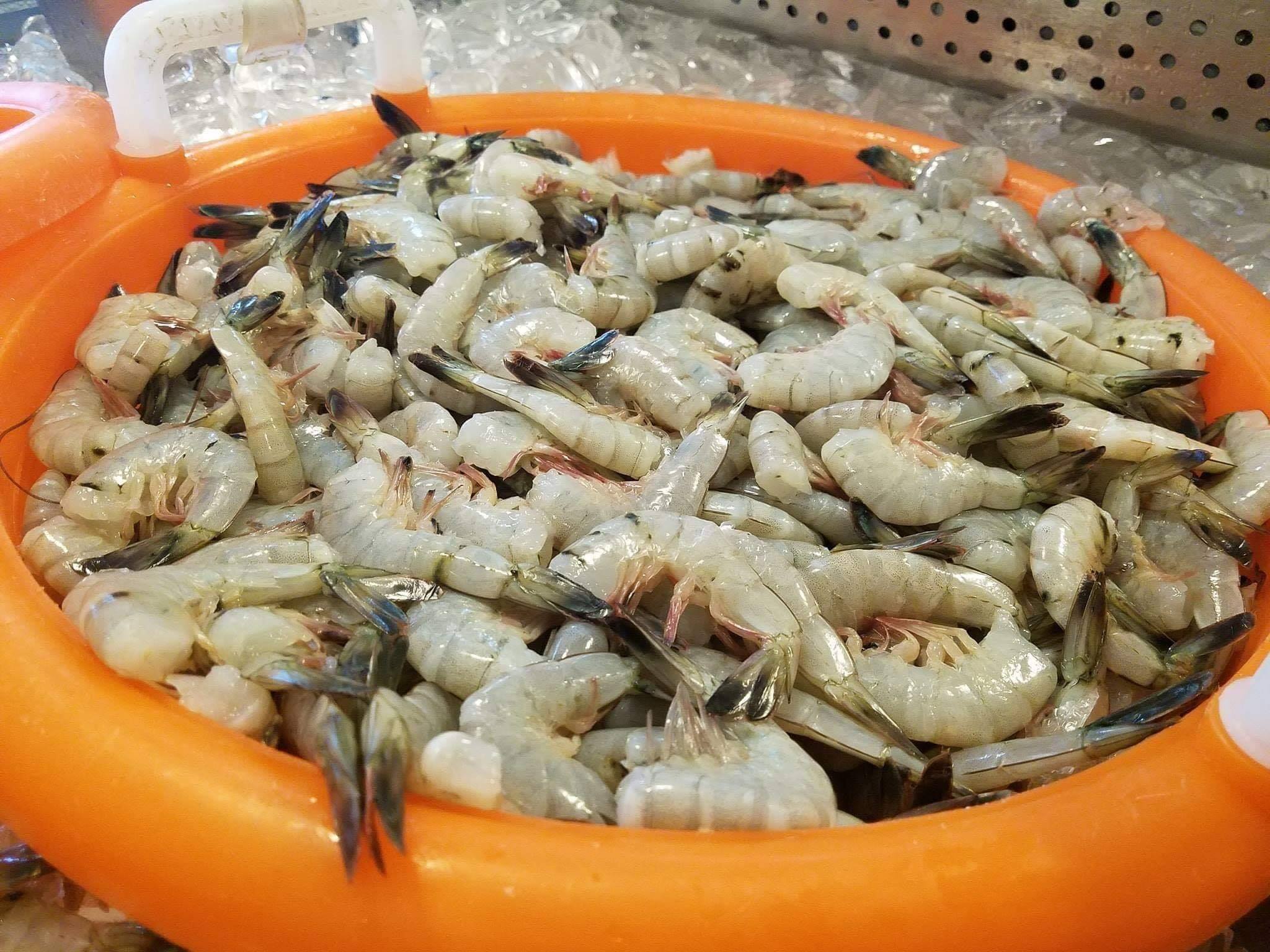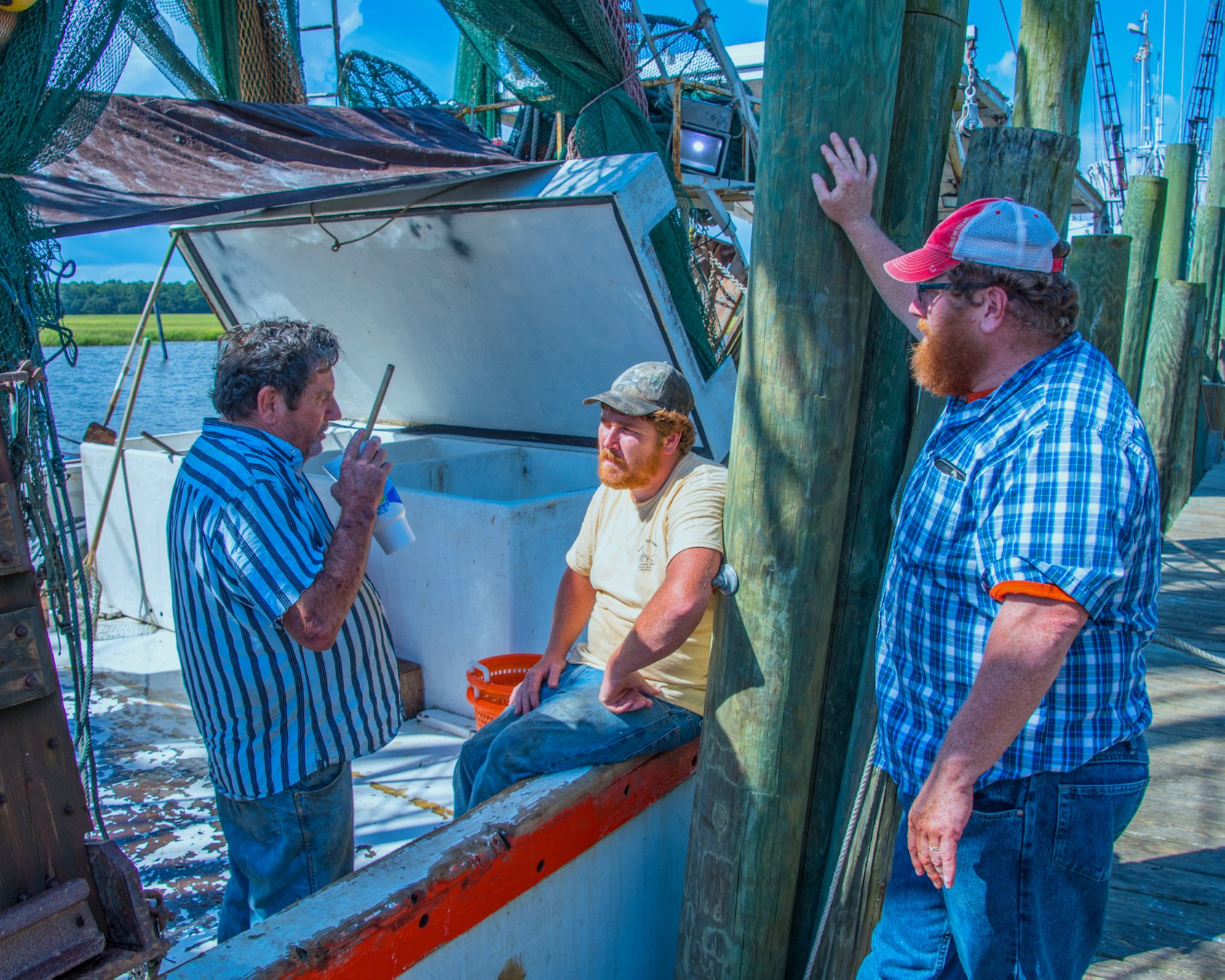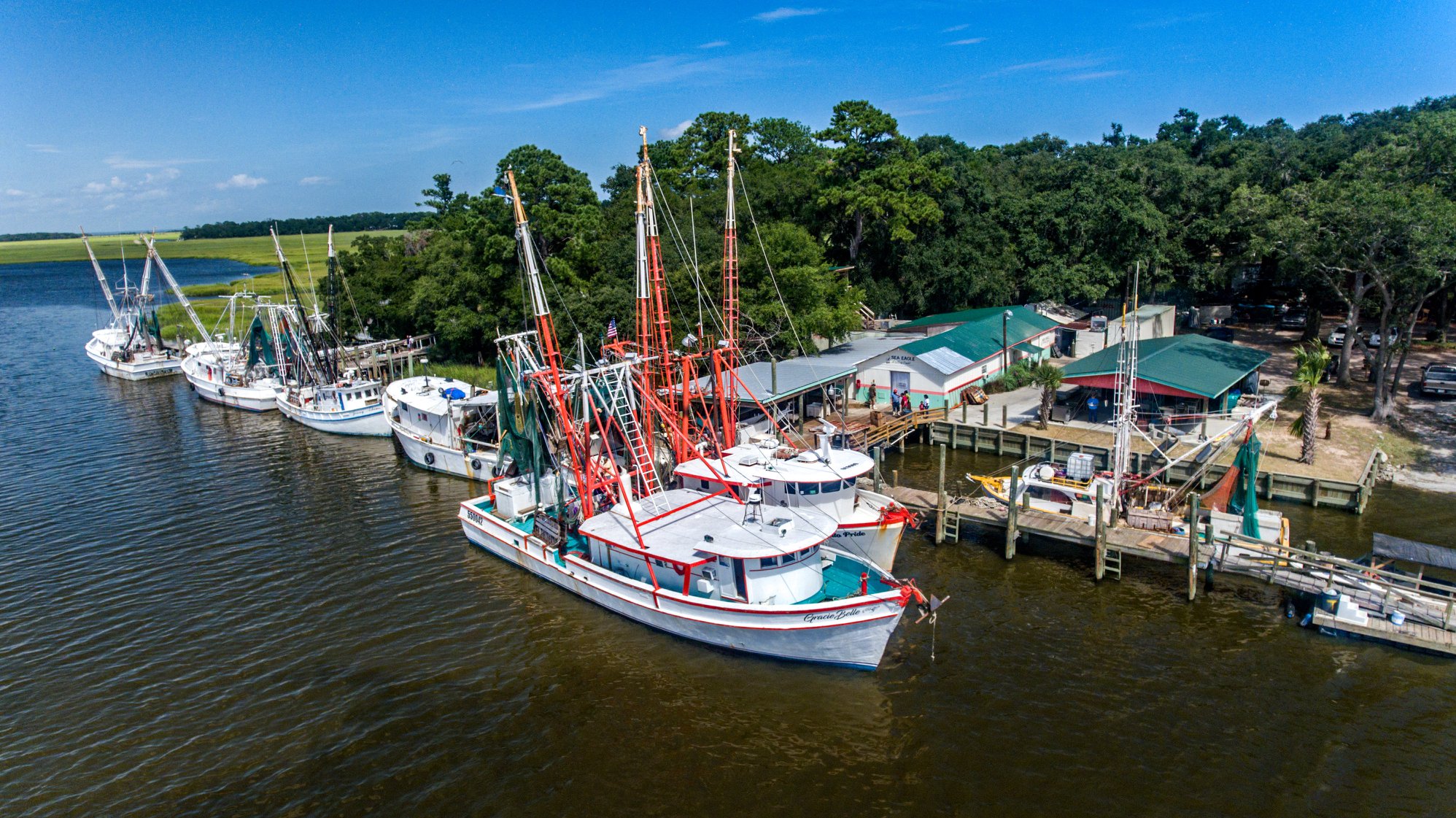
Shrimping has been around in South Carolina since long before anyone can remember. In fact it’s been a labor of love for fishermen since before the Civil War and is still alive and kicking today with a thriving market served by a force of dedicated commercial fishermen in the Palmetto State.
Subsistence fishing for shrimp was practiced by coastal native Americans. This practice was passed on to early European settlers and remained mostly a subsistence fishery through the Civil War. Limitations of preservation and transportation of shrimp kept the industry from developing further than supplying local markets during the seasons when shrimp were available.
In fact, during the period from the Civil War to the late 1940s, shrimp were primarily marketed as a canned product, as were lots of seafood varieties including oysters and crab. As refrigeration and rapid transportation became more available, the emphasis shifted to fresh and frozen product, and the modern commercial shrimping industry was born.
In 1880, the U.S. Bureau of Fisheries began to record landings of shrimp in the southeastern U.S., including South Carolina. The primary method of collecting shrimp during this period was through the use of haul seines and cast nets.

In the 1890s, the otter trawl, a cone shaped net pulled behind a boat, was developed and its widespread use began between 1910 and 1920. By the late 1920s, the otter trawl, in conjunction with powered vessels, began to efficiently collect large amounts of shrimp and the industry grew.
The ACE Basin, the coastline between Charleston and Beaufort yields approximately 4.6 million pounds of shrimp per year.
The shrimp fishery is managed by the South Carolina Department of Natural Resources, Marine Resources Division through licensing and seasonal opening of the fishery. Commercial fishermen must obtain a trawlers license and a captain’s license from the Office of Fisheries Management of the SCDNR. The license requires the fisherman to report landings and other fisheries data to the DNR to assist in management of the fishery.
Shrimping vessels have trawled South Carolina waters since the 1920s but of late have faced growing challenges. Making ends meet grows harder every year, but today’s shrimpers, like their predecessors on the water, seem to have it in their hearts. Though they talk freely of the obstacles, they find enough benefits to stay in it.
The shrimping industry in the ACE Basin is of primary importance to a number of small coastal communities including Bennett’s Point, Edisto Beach, and larger towns such as Beaufort. The long history of shrimping in our area has resulted in extensive economic and social components, with families depending on commercial shrimping for generations.

Local family shrimpers including Sea Eagle, who employs the majority of it’s own extended family, work day and night to provide the best in fresh local catch. Today, buying local means more than ever before.
Sea Eagle’s owner, Craig Reaves, himself a second generation shrimper, has taken it upon himself to help to try and take the lead to preserve his industry and to keep it alive here in our local area.
Reaves has become a steward of the local seafood industry, of sorts.

In addition to operating two fresh seafood markets in the Beaufort area, Sea Eagle recently opened a working waterfront on St Helena Island. Sea Eagle Market at Village Creek is a place where you can go and see all of the action. Shrimp are offloaded from local boats on the docks and then processed. They’re even headed, peeled and packed there.
With its brand of marketing and flair for on-the-boat and in-the-trenches photography and video, Sea Eagle is helping to preserve the industry here through photos, stories and showing the hardworking grit of its fishermen whether they’re hauling in shrimp, oystering or crabbing throughout our local waters.
They even use their own Sea Eagle social media to promote local restaurants who use local caught seafood to make sure as many people as possible know where the food comes from.
Not only important to those directly and indirectly involved in the fishery, the presence of the fishing community also contributes to our local tourism-based economy. When folks visit Beaufort, they want to experience our culture, and part of that culture is going out to enjoy some fresh local seafood cooked up in one of our locally owned restaurants.
Oh, by the way….our shrimp taste darn good too. South Carolinians insist that their local wild shrimp are much tastier than shrimp from the Gulf, overseas or, Heaven forbid, raised on foreign shrimp farms.
They really do taste better.
Over the past century, shrimping has become a local culture here in the Lowcountry and the boats are iconic. If you have had the good fortune to enjoy firsthand the natural beauty of a South Carolina seashore, perhaps a distant shrimp boat enhanced your view.
With any luck, and through lots of hard work, they’ll be around for folks to see for generations to come.









